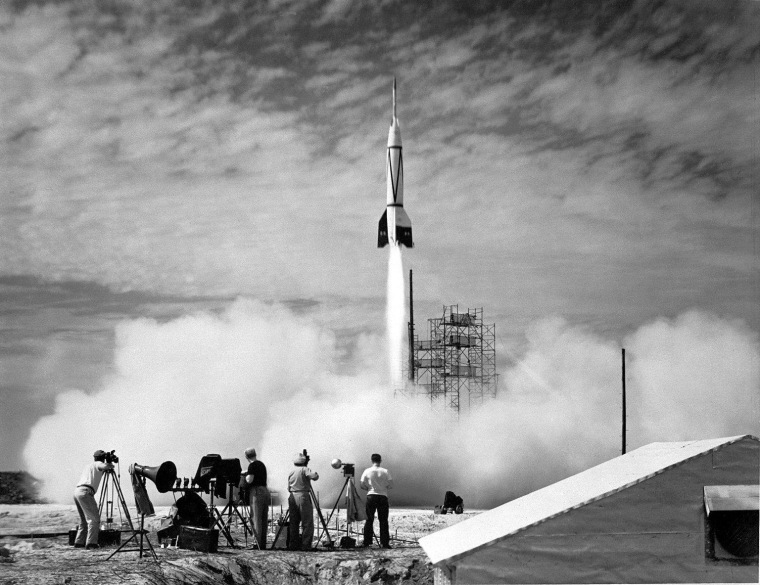Microsoft co-founder Paul Allen is selling some of his abstract art, and buying a historic rocket.
The eclectic Seattle billionaire has procured a rare Wernher von Braun-designed V-2 rocket, the first human-made object to fly into outer space.
Allen’s Flying Heritage Collection — located at Paine Field in Everett, Wash. — is taking possession of the rocket on Monday. The Mittelwerk GmbH V-2 rocket, one of only 16 in the world, will be assembled at the aircraft museum and then displayed as part of the permanent exhibit. The rocket — assembled from an an underground production facility near Nordhausen, Germany — is one of only six in the U.S. The purchase price was not disclosed.
Germany developed the V-2, and used the aerial weapon in the latter part of World War II against targets in London and Antwerp. According to a BBC report cited by Wikipedia, the V-2 was responsible for the deaths of 9,000 civilians and military personnel.
Here’s more on the rocket — which is nearly 46 feet tall and at one time had a range of 180 to 200 miles — from the Flying Heritage Collection’s fact sheet:
“V-2s were inaccurate, cumbersome to launch in combat conditions, and could not be built in sufficient numbers to turn the tide of war. Only around 4 percent of V-2 rockets fell within their 3-mile by 4-mile aim point. However, the approximately 3,000 weapons launched caused terrible casualties in Allied cities. The missiles flew too high and too fast to be intercepted or destroyed. There was no warning before a V-2 strike; the rocket, carrying more than 2,000 pounds of TNT and ammonium nitrate, impacted the ground travelling faster than the speed of sound.
"After Germany’s surrender, captured missiles were brought to the United States. Technologies pioneered in the German V-2 program formed the basis for America’s ballistic missile and space programs through the Apollo moon landings and beyond.”
John Cook of GeekWire can be followed on Twitter and Facebook. Don't forget to follow @GeekWire as well.
More from GeekWire:
- Paul Allen sold this painting for $43.8 million
- U.S. Air Force deploying 18,000 iPads
- Teen wins space video contest
Copyright 2013 GeekWire. Reprinted with permission.
